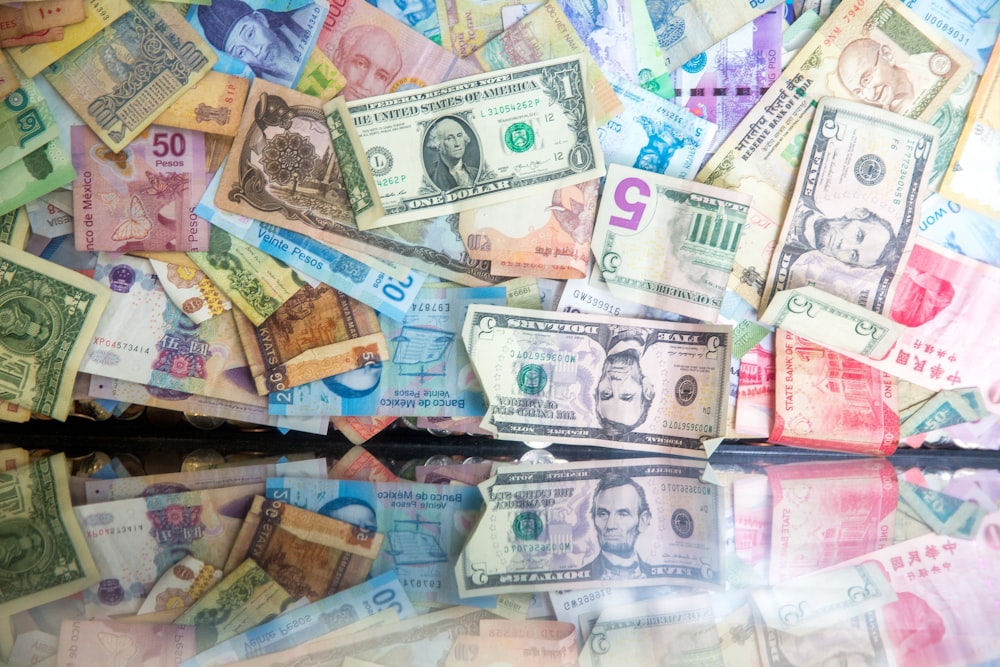FX Daily: Payrolls To Support Back-To-Back 50bp Fed Hikes
Image Source: Unsplash
Safe-haven demand is back after markets turned less optimistic about de-escalation in the Ukraine conflict. Together with continued peace talks today, markets will focus on US March payrolls, which we expect to come in at 500k. The release should help markets cement expectations around two 50bp hikes in May and June, which could further support the dollar
USD: Payrolls can offer more help
Markets jumped back on long dollar positions yesterday as global risk sentiment deteriorated and equities came under pressure. Some quarter-end flows were also behind the move but the main trigger was a re-assessment of previous optimistic expectations around a military de-escalation in Ukraine. All European currencies fell sharply, with Scandies standing out as key underperformers. Sweden's krona seems to be building back some of the geopolitical risk premium that had evaporated in the past few weeks, while Norway's krone suffered from a toxic combination of worsening risk sentiment and falling oil prices, along with the news that Norges Bank will sell NOK 2bn a day on behalf of the government following the rise in energy export prices.
The dollar, yen, and Swiss franc are heading into the weekend with a tailwind, which will however be challenged by more peace talks between Russia and Ukraine today. Even if some fresh optimistic headlines dampen safe-haven demand, we think the dollar is the least likely to lose ground today, as US payrolls may offer some support.
While there are some downside risks related to lingering supply issues in the labor market, our economist still expects a 500k headline nonfarm payroll reading today, in line with the consensus at 490k. In our view, this should be enough to help markets cement expectations around two 50bp rate hikes in May and June, which is also our base-case scenario.
This, in turn, may leave the dollar more protected in the event of a rebound in risk appetite. Commodity currencies may remain a bit more on the backfoot until the impact of the US oil reserve release is fully absorbed by crude prices, but given that the supply shock of self-imposed bans on Russian oil is likely a bigger and longer-term issue, we don’t expect this to be the start of a sustained downtrend in commodity FX.
EUR: No help from lower oil prices
The euro was dragged down by a correction in eurozone bond yields yesterday and less optimism around advancements in Russia-Ukraine peace negotiations. Most importantly, markets don’t seem to be particularly rewarding the euro for the lower oil prices. Instead, the looming risk of Russia imposing ruble payments to gas contracts with the EU (although the viability of this remains a bit questionable) appears to be a more significant issue in the commodity space for the euro.
The eurozone aggregate CPI data will be released today after individual country numbers showed a significant (and higher than expected) pick-up in prices in March. Multiple European Central Bank speakers today and over the weekend could shed some light on what this could mean for ECB policy.
Unless we see some progress in today’s peace talks, EUR/USD may remain vulnerable as US payrolls could generate some more dollar strength.
GBP: Starting to recover
It is another very quiet day in the UK data-wise, and there are no Bank of England speakers scheduled. The pound did not follow other European currencies higher in the rally induced by peace-talk optimism and is now suffering very little from market doubts about an imminent de-escalation in the conflict.
The EUR/GBP downtrend may continue in the coming days, and we think a return to 0.8300 remains likely in the near term.
CZK: Unclear CNB picture, but no change for CZK
In line with market expectations, the Czech National Bank raised the key interest rate by 50bp to 5.0%, the highest level since 2001. The decision did bring market disappointment as we expected, but on the other hand, Governor Jiří Rusnok's press conference erased most of the losses and resulted in a mixed picture, with the short end of the curve slightly higher. However, the message was clear that this is not the end of monetary tightening and the CNB's view on the koruna is: (1) intervention in favor of a stronger CZK is not currently on the table, but (2) the central bank would like to see stronger levels to help dampen inflationary pressures from abroad.
From our perspective, yesterday's CNB decision hasn't made much difference to the recent rate correction, leaving the market interest rate differential roughly 30bp below its peak and the CZK vulnerable to any shock from global headlines. On the other hand, we know that the CNB will not allow the CZK to weaken significantly. Thus, we continue to expect a gradual appreciation to pre-Ukrainian conflict levels, but with temporary swings to weaker levels.
Disclaimer: This publication has been prepared by the Economic and Financial Analysis Division of ING Bank N.V. (“ING”) solely for information purposes without regard to any ...
more



